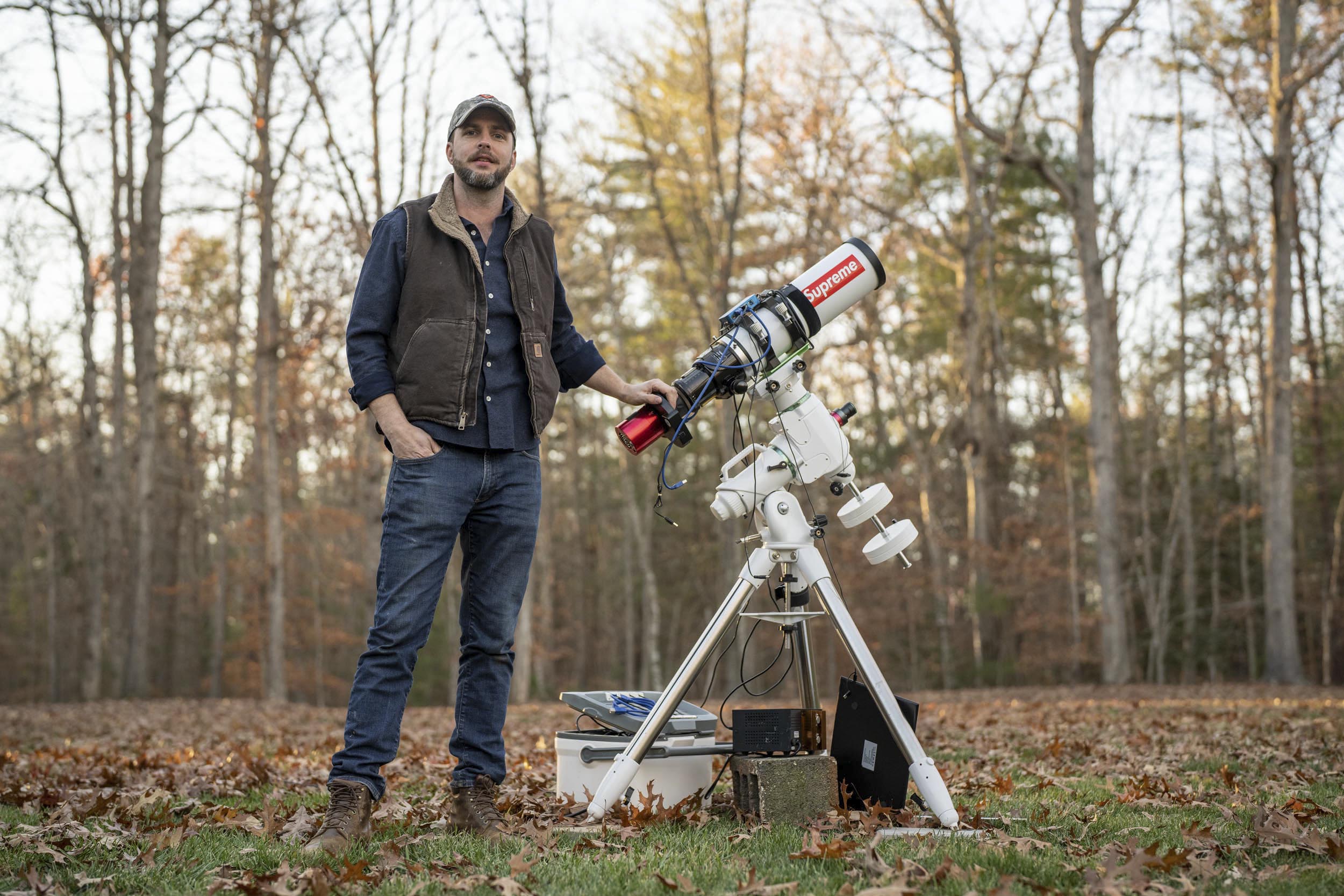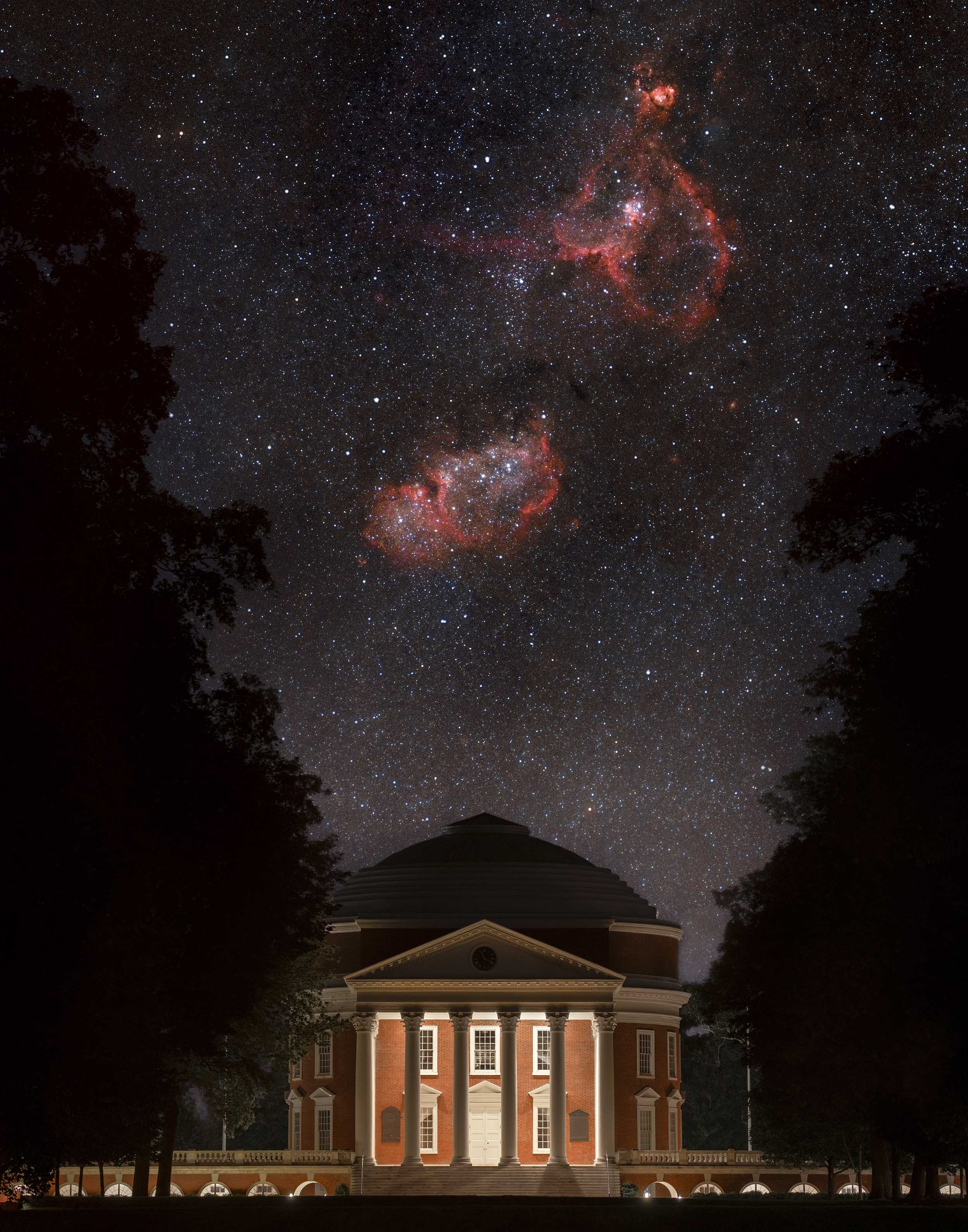Gilmore, who since graduating from UVA in 2001 has served as a United States foreign service officer, chief of staff for Tom Perriello’s campaign for Virginia governor and as an adjunct professor at James Madison University, is currently the executive director of Clean Virginia, a nonprofit environmental organization in Charlottesville.
It was during the pandemic when Gilmore, suddenly with a little extra time on his hands, waded into astrophotography, a field in which he had been interested since taking an astronomy course as an undergrad.
From the get-go, Gilmore realized that he enjoyed mixing the nighttime sky and terrestrial landscapes in his photos.
“I’m really drawn to those because it marries the cosmic with the terrestrial and sort of shows how we’re basically floating on a spaceship through space, and you can see a little bit of Earth and a little bit of the stars as well,” Gilmore said.
“I got really into taking those types of shots – shots that show a beautiful landscape with the Milky Way above it, or people and then the stars above.”
Gilmore became interested in nebulas – the bodies of interstellar clouds that can consist of cosmic dust, hydrogen, helium and molecular clouds (possibly as ionized gases) – and discovered that the Heart and Soul Nebulae would be lining up perfectly in the sky above the Rotunda in the late summer.
Last spring, Gilmore started planning how he would go about taking a photo of it. The Heart and Soul Nebulae, discovered in 1787 and 1848, respectively, are located in the Cassiopeia constellation, some 7,500 light-years from Earth.
“These are not photos you can take just by pointing your camera and clicking,” Gilmore explained. “You have to build these photographs, almost like a painting. I had to shoot the sky separately from the ground because the Earth is spinning very fast and the stars aren’t …
“You have to shoot the sky above and then shoot the land, and then blend these photos together to have a representative image of what the sky would look like if human eyes were able to see that light there.”
Using his 180-millimeter lens, it took Gilmore roughly four hours of exposures to shoot the sky, with the camera’s shutter needing that much time to collect enough light. He returned the next night to shoot the Rotunda and Lawn separately. Then, using algorithms on his computer, he “stitched” together 124 images that were “stacked” on seven panels.
“You have all this data from the sky that you have to process so it can reveal what’s there,” Gilmore said. “That’s one of the reasons I love astrophotography, because it’s kind of uncovering something that you can’t see on the surface. The Rotunda’s right in the middle of town and you can’t see the Heart Nebula, and you can’t see that many stars. …
“Where the magic happens is that you can take the values of the light pollution that isn’t coming from space and subtract it from the image, thus revealing the hidden treasure underneath.”






